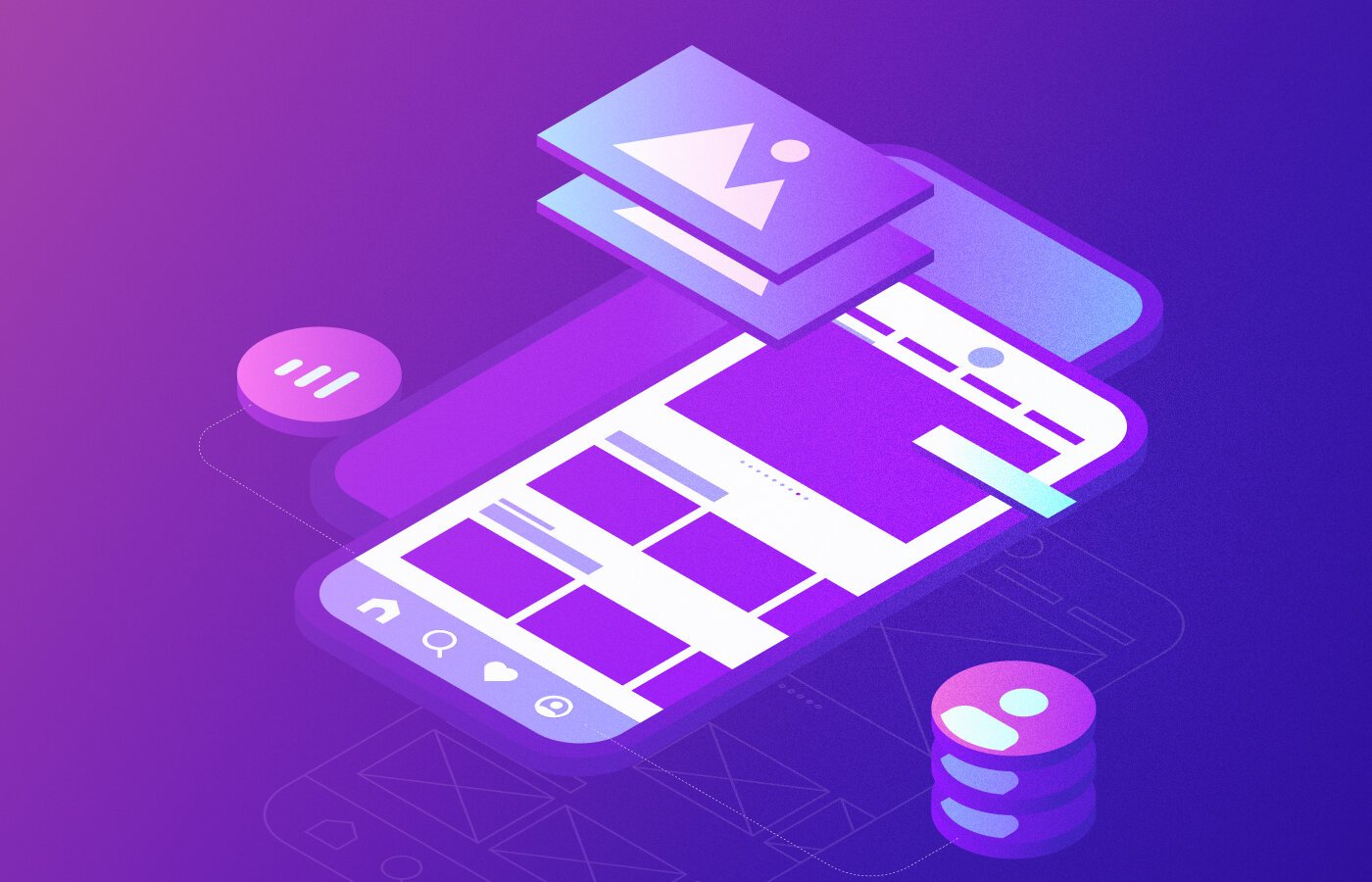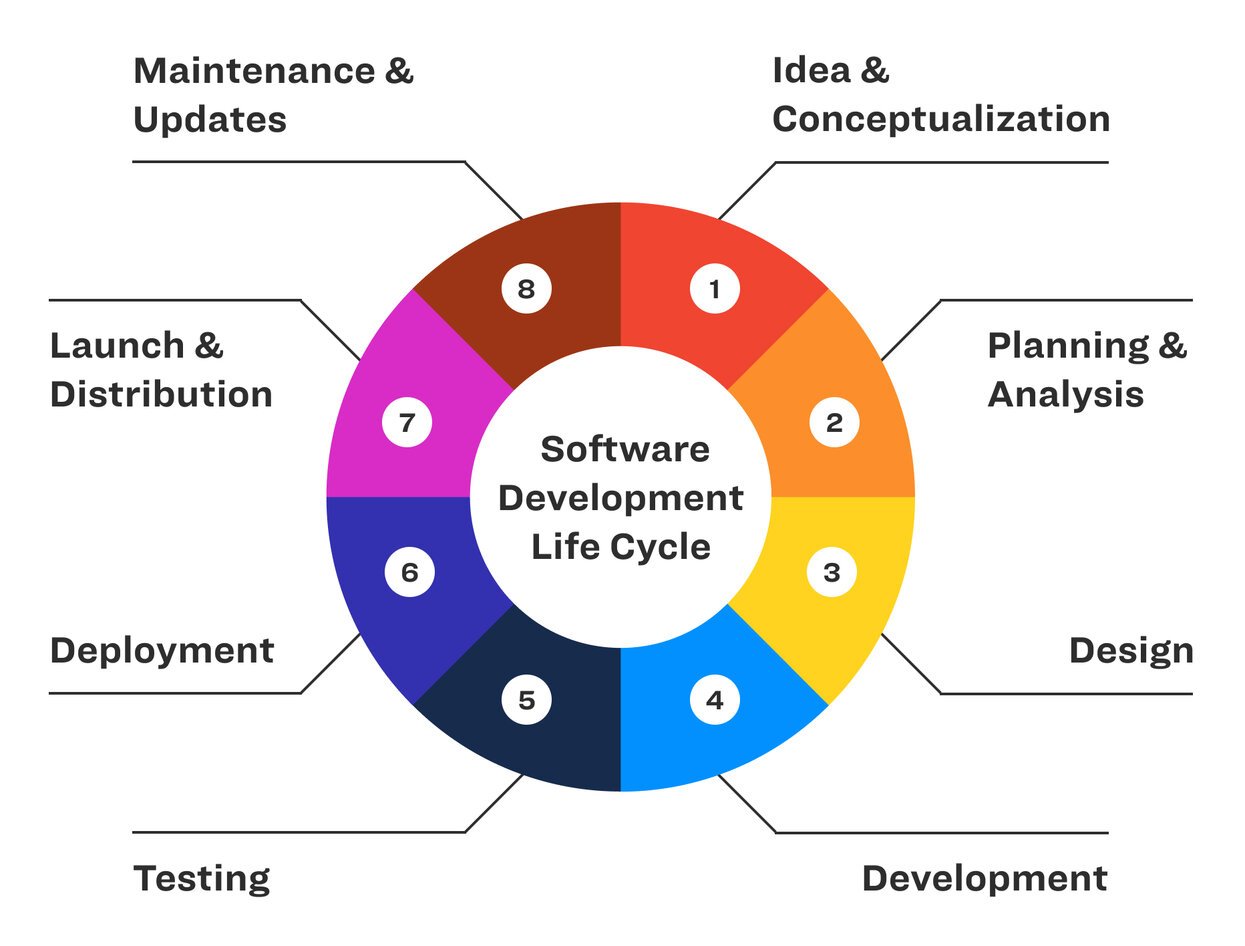blog
Guide to Stages of App Development Lifecycle
By Mohan S App development Customer Experience June 29, 2023

Whether you're an aspiring app developer, a business owner, or the Chief Technology Officer (CTO), understanding the stages of app development in Singapore is essential for everyone involved in the process. The process of creating an app is intricate and demands careful planning, coordination, and execution. Understanding each stage allows you to efficiently manage resources, establish reasonable expectations, and guarantee the timely delivery of a high-caliber app.
App development costs rise as the project moves from simple planning to complex development and testing, with each stage’s demands directly influencing the overall budget. Defining the stages of your app development will help you breakdown the cost of your project.
You may also like to read: What’s trending in app development?
Different types of mobile apps can increase brand visibility, spot monetisation opportunities, and ultimately gain a competitive edge in the market by utilising these capabilities. Mobile apps are crucial in a world that is becoming more and more mobile-centric because they enable deep connections between companies and their clients and promote business growth.
Stages of App Development
App development is made up of a number of connected phases, each of which is essential to turning an idea into a working app. For an app development project to be successful, it is imperative to comprehend these stages. Understanding various phases involved in app development can also help you determine the cost of app development in advance. Here we examine the key phases of app development and talk about how important they are for taking an app from conception to completion

There are usually eight key stages involved in the app development process:
Phase 1: Idea and Conceptualisation
This stage involves conducting thorough market research, understanding market demand, target audience, and competition, and analysing similar apps. Defining the goals and objectives of the app is crucial, as well as creating user personas to represent the target audience's characteristics, preferences, and needs.
As the app idea progresses, it is essential to assess its technical feasibility, considering required technologies, integration possibilities, and potential challenges.
Building a proof of concept (POC) is a valuable step in this phase, showcasing the core functionality of the app.
Defining the minimum viable product (MVP) is another crucial step, identifying essential features that the app must have to provide value to users.
A comprehensive business plan is developed, including revenue models, monetisation strategies, and cost estimation for app development, marketing, and ongoing maintenance. This ensures a clear understanding of financial aspects and effective resource allocation.
Phase 2: Planning and Analysis
The planning and analysis phase of app development involves:
Determining the technical requirements
Selecting appropriate development frameworks
Programming languages
Choosing a development approach
Native development involves building separate versions for each platform, while cross-platform development allows for a single codebase to be deployed across multiple platforms. Read more about the difference between native and hybrid apps for your business.
The planning and analysis phase also outlines the development timeline, sets milestones, and allocates resources, ensuring efficient project management and estimating costs. It also conducts a detailed analysis of potential risks and challenges, identifying bottlenecks and dependencies to develop mitigation strategies and contingency plans.
Phase 3: Design
The design phase of app development focuses on creating an intuitive and visually appealing user interface (UI) and user experience (UX) for the app.
UI designers create visual elements such as layout, colour schemes, typography, and icons that align with the app's branding and target audience. They use their expertise in graphic design, visual hierarchy, and aesthetics to create a visually appealing and easy-to-navigate interface. Wireframing and prototyping are essential steps in the design process, providing low-fidelity representations of the app's screens and features.
UX designers aim to create a seamless and intuitive experience by understanding user behaviour, conducting usability testing, and optimising the app's usability.
Collaboration between designers, developers, and stakeholders is crucial to ensuring the designs are technically feasible and aligned with the project's goals. Regular feedback and iterations are essential to refine the UI and UX designs.
Phase 4: Development
The development phase involves coding and programming an app, transforming the final design and functional requirements into a fully functioning application. It follows an agile methodology, breaking projects into manageable sprints.
Developers work closely with designers and stakeholders to ensure app features and functionalities are implemented according to specifications.
They write code, integrate UI designs, manage data, and may integrate with external services or APIs.
Regular testing, unit testing, integration testing, and user acceptance testing are crucial aspects of the development phase.
Version control systems, like Git, manage the codebase, track changes, and enable collaboration among team members.
Effective communication and collaboration are essential, with progress updates and milestones ensuring the project stays on track.
Phase 5: Testing
The testing phase is a crucial stage in app development, aiming to identify and fix issues or bugs before the app is released to users. It involves various types of testing, including functional, usability, performance, compatibility, security, and localisation testing.
Functional testing ensures the app works as expected.
Usability testing assesses user-friendliness and ease of navigation.
Performance testing evaluates the app's responsiveness, speed, and stability under load conditions.
Compatibility testing ensures the app functions correctly across different devices and platforms.
Security testing evaluates the app's vulnerability to potential threats.
Localisation testing ensures it functions correctly in different languages.
User acceptance testing (UAT) involves real-world user feedback to refine the app's functionality, usability, and overall user experience.
Bug tracking and reporting tools are used to document and address identified issues, and the development team collaborates with the testing team to fix bugs and verify their effectiveness.
Phase 6: Deployment
The deployment phase is the final stage of app development, where the app is prepared and released to the target audience. It involves:
Preparing the app for distribution through platforms like app stores or enterprise distribution channels.
Compiling the final build.
Conducting quality assurance testing.
Releasing and distributing the app.
Monitoring performance, user feedback, and reported issues.
Maintaining and updating the app.
Post-release monitoring helps address issues and gather insights for future improvements. Ongoing maintenance and updates are essential to keeping the app relevant, secure, and compatible with evolving platform requirements. Establishing effective mechanisms for user support and engagement, such as customer support channels and analytics, also contributes to user engagement.
Phase 7: Launch and Distribution
The launch and distribution phase is an essential stage in app development, where the app is introduced to the market and made available to its target audience.
This stage involves strategic planning, marketing efforts, and ensuring a smooth rollout across various channels. Marketing and promotion are crucial, including creating a website, optimising app store listings, and implementing marketing tactics like social media campaigns and app preview videos.
App Store Optimisation (ASO) improves app visibility and discoverability, while distribution channels, such as enterprise platforms, third-party marketplaces, and partnerships with device manufacturers, are also considered.
A phased rollout approach, releasing the app in specific regions or to a limited number of users, helps mitigate risks and ensure a smoother launch.
User onboarding is crucial, with intuitive and interactive tutorials or walkthroughs to guide users through the app's features and functionality. App performance monitoring helps identify areas for improvement, address technical issues promptly, and gather insights for future updates and feature enhancements.
Phase 8: Maintenance and Updates
The maintenance and update phase of app development is crucial for long-term performance, stability, and user satisfaction. It involves monitoring the app, addressing issues, and releasing updates to enhance functionality, security, and introduce new features. This process involves bug fixes, issue resolution, performance optimisation, security updates, feature enhancements, compatibility with operating systems and devices, user engagement and support, and data analysis and insights.
By addressing issues, improving functionality, and ensuring compatibility with different platforms and devices, the maintenance and updates phase ensures the app remains relevant, secure, and competitive in the market.
The success of the app as a whole is a result of how each stage builds on the one before it and is connected to the others. You can improve your chances of delivering a high-quality app that satisfies user needs and accomplishes your goals by moving through these stages with careful planning, collaboration, and attention to detail.
Conclusion
Keep in mind that creating an app requires cooperation from testers, designers, developers, and other stakeholders. To ensure a seamless transition between stages and the successful delivery of the app, clear communication and teamwork are essential.
You can improve your chances of creating a successful app that connects with your target audience and helps you reach your business objectives by moving through the stages of app development with careful planning, attention to detail, and a focus on the user experience.
Mobile apps are expected to generate $935 billion in 2023 alone. Therefore, whether you're an aspiring app developer looking to improve your skills or a business owner aiming to realise your app idea, embrace the stages of app development and start your journey with confidence and a structured approach.




